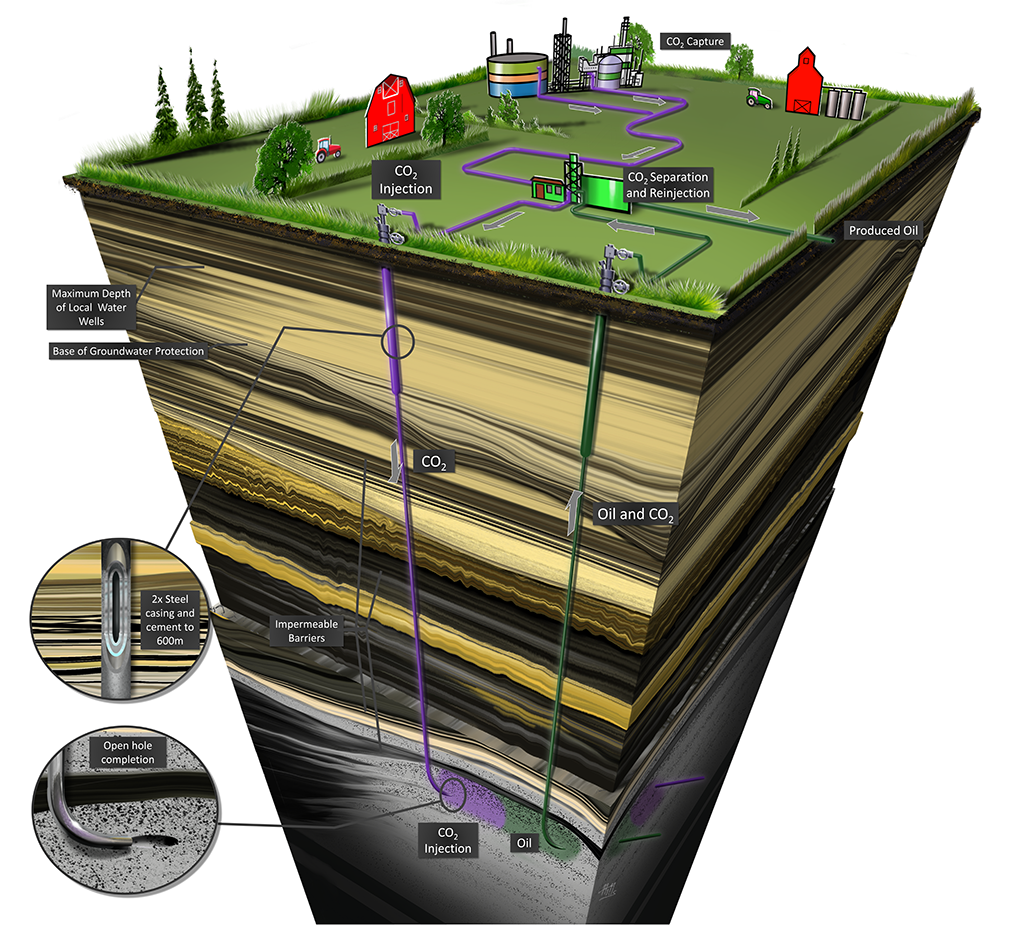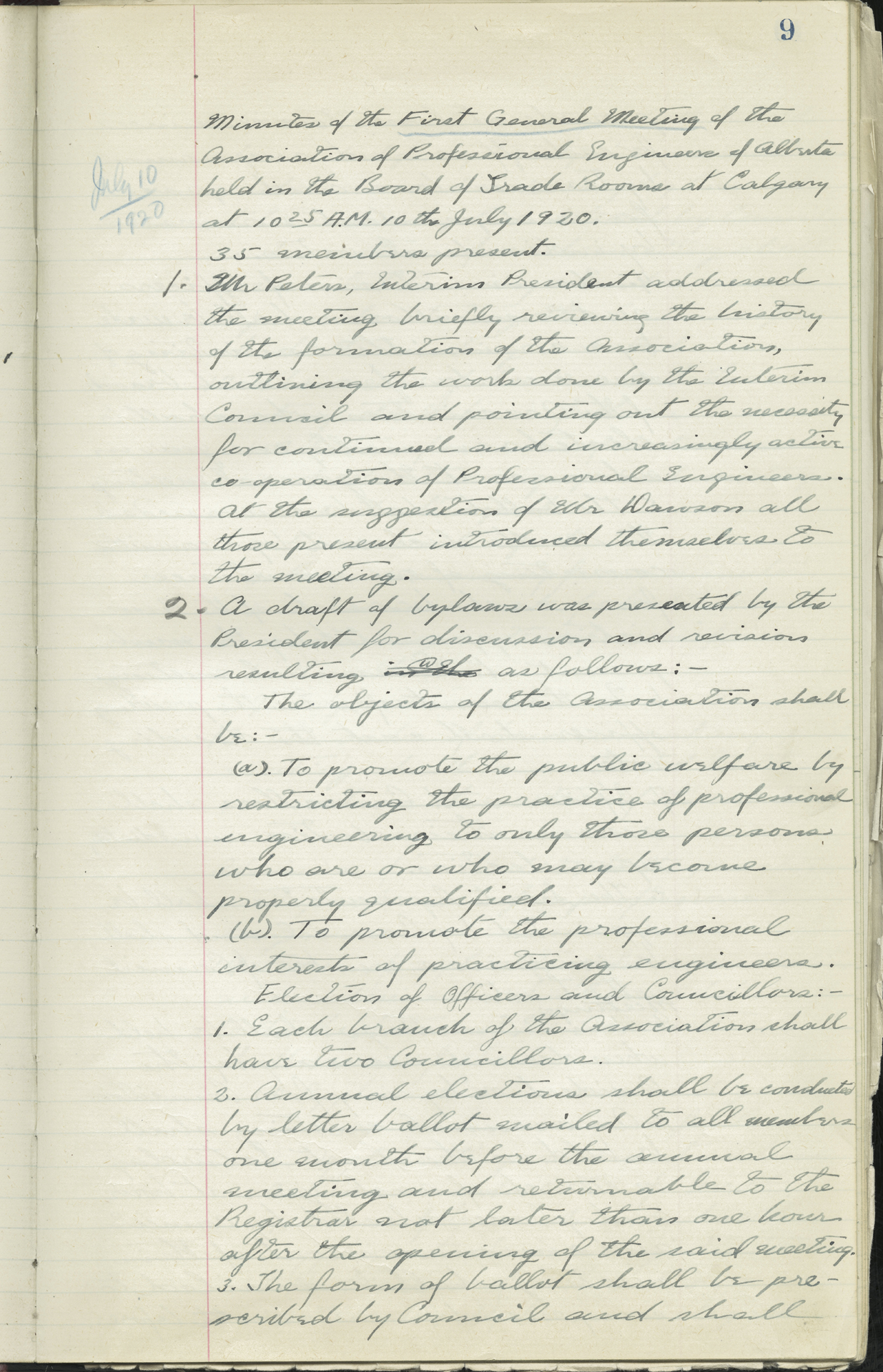Photo courtesy of Enhance Energy Corp.
Ready to Rock: How a Pipeline is Reducing Alberta’s Carbon Footprint
A massive engineering project—with a geoscience twist—will soon make history in Alberta. Operations for the 240-kilometre Alberta Carbon Trunk Line are set to begin in APEGA’s centennial year, 2020.
Carbon emissions produced by the North West Redwater Sturgeon Refinery and the nearby Nutrien fertilizer plant will be captured and liquified, then piped through the trunk line to a facility near Clive, north of Red Deer. From there, the COâ‚‚ will be pumped 1,800 metres underground into depleted oil reservoirs, helping push out previously unrecoverable oil while remaining permanently trapped in the porous rocks.
“It has the potential to be a major piece of the environmental puzzle to reduce Alberta’s carbon footprint,” notes David Hills, P.Geo., senior geoscientist at Enhance Energy, the Calgary-based company leading the $1.2-billion project.
Hills—who holds a geology degree from Southampton University in England and a master’s in carbonate sedimentology from the University of Alberta—has built three high-resolution models to help provide a better understanding of the oil reservoirs’ geology.
It’s estimated the enhanced oil recovery technology will allow producers to squeeze an additional one billion barrels of oil from aging fields in central Alberta. At full capacity, the project will also store up 14.6 million tonnes of COâ‚‚ per year—the equivalent of removing 2.6 million cars from the road.
“On top of preventing COâ‚‚ from going into the atmosphere, we’re giving a new lease on life to existing oilfields that have been around for 50 to 60 years. They may see another 20 to 30 years of further production from this activity, which means jobs and a stronger economy,” says Hills.
Enhanced oil recovery technology

Diagram courtesy of David Hills, P.Geo.
This is Alberta’s first large-scale commercial project for carbon capture utilization and storage. It’s also the world’s longest carbon dioxide pipeline. Partners in the trunk line include Enhance Energy, Wolf Carbon Solutions, the refinery and fertilizer plants near Redwater, and the provincial and federal governments.
“This is just the first step. We’ve got massive capacity left to fill in this pipeline,” says Hills. “We’re hoping for more companies to join, with a lot more sources of COâ‚‚. There are hundreds of oil fields that are near the end of their lives that would benefit from this type of technology.”
No other crude oil produced in the world will have a lower net carbon impact than the oil recovered from the Clive field.
“Alberta can produce low carbon oil, and that’s something to be proud of,” says Hills.



